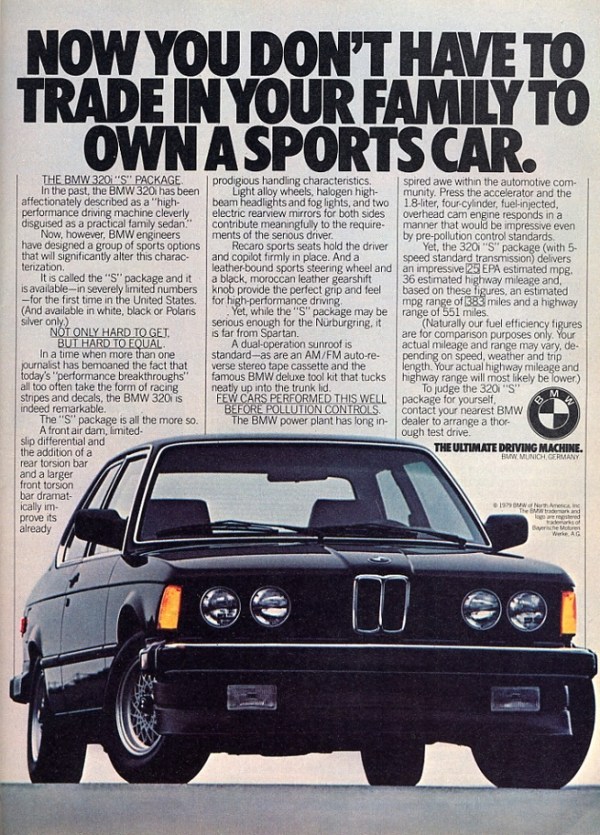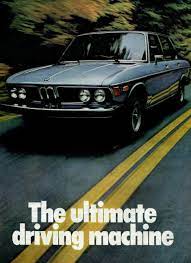Iconic Ads: BMW – The Ultimate Driving Machine

The campaign met a universal need while also delivering on a promise: it portrayed BMW as a car designed for drivers first and foremost – The Ultimate Driving Machine
BMW had a simple, and now Bavarian, recipe for success before the mid-1970s. It created cars with consistent and basic designs that were appealing from every viewpoint and would age well.
However, each model would bring new technological advancements. The cars were not supposed to get flashier from one year to the next or from one development cycle to the next, but they were supposed to get smarter each year and cycle. Many BMW fans were confused by how innovations were presented in advertising and press materials, but motor journalists were always able to comprehend it and almost always praised BMW for every advancement. Dreikugelwirbelwannenbrennraum was the name given to trispherical combustion chambers in advertisements. So much for customer friendliness.
BMW had a knack for getting away with things like this. That kind of technical language worked for BMW in the same way that selling Beetles as “ugly” worked for Volkswagen. Another advertisement promoted “anti-dive front suspension.” This, on the other hand, was not so much technical innovation as it was the brainchild of sales and marketing executives such as Bob Lutz. Lutz knew exactly what he intended the automobile to perform on the road, as well as how to describe it. Other automakers, such as Mercedes and Audi, had used comparable technology and design geometry to protect the car’s front end from falling during harsh braking, but it took BMW to publicize it so openly.
The Change
Things were going to be different in the United States, according to Lutz, an ex-GM executive.
There was an agency that was unknown until the early 1970s when a series of Fiat advertising developed by Ammirati Puris AvRutick caught Lutz’s attention. Lutz decided to take a chance on the underdog agency.
Baby Boomers were out of college, earning money, and ready to spend their hard-earned money in the 1970s. What better way to show off your accomplishments than with a high-end vehicle?
A pitch was made. It took Martin Puris of A&P a few weeks to come up with a tagline, to go along with the concept. Before this, the BMW dealers’ commercials did a good job of presenting the hardware, similar to what was done in Germany, but there was no overall theme to tie every ad to one idea wanted to transmit to the customer.
The Line
Puris doesn’t remember when he composed the famous phrase of ad copy. He only remembers working out a bunch of jumbled words and phrases at his desk until one stood out: “The Ultimate Driving Machine.” Puris had to win over his partners before pitching it to the Germans, although that line has lasted longer than any other in the auto business. “Ralph [Ammirati] and the others had doubts. They thought it was a little too brash, a little too forceful. ‘No, this is it,’ I answered. In one line, one thought, it expresses everything they wanted to communicate. He realized, for example, that on billboards and bus shelters, it would be excellent to just run a great photo of the automobile and just one line of copy if we wanted to, with no other copy.
.The particular model in question was the BMW 2002. It was considered as an issue by the agencies and BMW, even though it put BMW on the map among the few Americans who had embraced BMW in its early days. It was smaller than a Cadillac or Mercedes, but it cost nearly as much as certain Cadillac and Mercedes models. in Part of the agency’s big pitch for the business included transporting the 2002 to country-club parking lots and interviewing members about their impressions—in parking lots where there was seldom a BMW parked in their slots. When the price was revealed to the golf crowd, the most prevalent comment was, “You’ve got to be kidding.” The research convinced the agency that it would have to market BMW as a “new kind of luxury.
As is clear, luxury was defined mostly by size, plush interiors, and a very wallowing ride from Lincolns, Cadillacs, and Mercedes at the time, so the job was to refocus the conversation on performance. BMWs were not just smaller, but also had sparse interiors. The price tag’s value was found under the hood and in the engine, not in the interiors.
When looking for a car, or anything else for that matter, it’s difficult to overlook a product that claims to be “The Ultimate Driving Machine,” especially when their fathers had been parking sloppy, overweight cars for the previous two decades.
Martin Puris said “these guys (at BMW) were racing guys. So, they built a car. It looked like an old Corvair. And cost the same as a Cadillac or a Lincoln, which were American’s ideas of what a luxury car was. And when we got the business the very first day out BMW was ‘the ultimate driving machine’.”
The campaign met a universal need while also delivering on a promise: it portrayed BMW as a car designed for drivers first and foremost.
It’s safe to say that Lutz’s risk paid off handsomely, and he was instrumental in BMW’s success in the 1970s and beyond.






